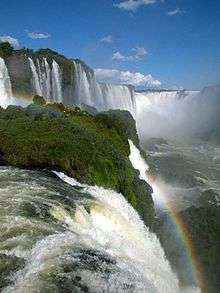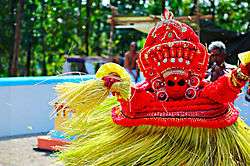Tourism in Kerala

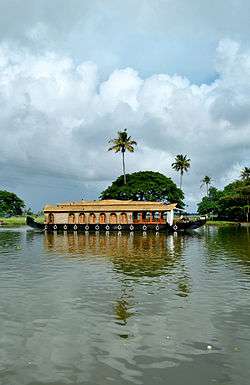

Kerala, a state situated on the tropical Malabar Coast of southwestern India, is one of the most popular tourist destinations in the country. Named as one of the ten paradises of the world by National Geographic Traveler,[1] Kerala is famous especially for its ecotourism initiatives and beautiful backwaters.[2] Its unique culture and traditions, coupled with its varied demography, have made Kerala one of the most popular tourist destinations in the world. Growing at a rate of 13.31%, the tourism industry is a major contributor to the state's economy.[3]
Until the early 1980s, Kerala was a relatively unknown destination, with most tourism circuits concentrated around the north of the country. Aggressive marketing campaigns launched by the Kerala Tourism Development Corporation—the government agency that oversees tourism prospects of the state—laid the foundation for the growth of the tourism industry. In the decades that followed, Kerala Tourism was able to transform itself into one of the niche holiday destinations in India. The tag line Kerala – God's Own Country was adopted in its tourism promotions and became a global superbrand. Kerala is regarded as one of the destinations with the highest brand recall.[4] In 2010, Kerala attracted 660,000 foreign tourist arrivals.[5]
Kerala is an established destination for both domestic as well as foreign tourists. Kerala is well known for its beaches, backwaters in Alappuzha and Kollam, mountain ranges and wildlife sanctuaries. Other popular attractions in the state include the beaches at Kovalam, Kappad, Cherai and Varkala; backwater tourism and lake resorts around Ashtamudi Lake, Kollam; hill stations and resorts at Munnar, Wayanad, Nelliampathi, Vagamon and Ponmudi; and national parks and wildlife sanctuaries at Periyar, Parambikulam and Eravikulam National Park. The "backwaters" region—an extensive network of interlocking rivers, lakes, and canals that centre on Ashtamudi Lake, Kollam, also see heavy tourist traffic. Heritage sites, such as the Padmanabhapuram Palace, Hill Palace, and Mattancherry Palace, are also visited. The city of Trivandrum ranks first in the total number of international and domestic tourists in Kerala.[6][7] To further promote tourism in Kerala, the Grand Kerala Shopping Festival was started by the Government of Kerala in 2007.[8] Since then it has been held every year during the December–January period.
The state's tourism agenda promotes ecologically sustained tourism, which focuses on the local culture, wilderness adventures, volunteering and personal growth of the local population. Efforts are taken to minimise the adverse effects of traditional tourism on the natural environment, and enhance the cultural integrity of local people.
Historical context

Since its incorporation as a state, Kerala's economy largely operated under welfare-based democratic socialist principles. This mode of development, though it resulted in a high Human Development Index and standard of living among the people, led to an economic stagnation in the 1980s (growth rate of 2.3% annually).[9]) This apparent paradox—high human development and low economic development—led to a large number of educated unemployed seeking jobs overseas, especially in the Gulf countries. Due to the large number of expatriates, many travel operators and agencies set up shop in the state to facilitate their travel needs. However, the trends soon reciprocated, with the travel agencies noticing the undermined potential of the state as a tourist destination. The first travel agency in Kerala, Kerala Travels, was founded by Col G.V. Raja of the Travancore royal family along with P.G.C. Pillai.
By 1986, tourism had gained an industry status. Kerala Tourism subsequently adopted the tagline God's Own Country in its advertisement campaigns. Aggressive promotion in print and electronic media were able to invite a sizable investment in the hospitality industry. By the early 2000s, tourism had grown into a full–fledged, multibillion-dollar industry in the state. The state was able to carve a niche for itself in the world tourism industry, thus becoming one of the places with the "highest brand recall".[10] In 2003, Kerala, a hitherto unknown tourism destination, became the fastest growing tourism destination in the world.[11]
Today, growing at a rate of 13.31%, Kerala is one of the most visited tourism destinations in India.[3][12]
Major attractions
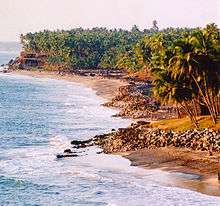
Beaches
Flanked on the western coast by the Arabian Sea, Kerala has a long coastline of 580 km (360 mi); all of which is virtually dotted with sandy beaches.
Kovalam beach near Thiruvananthapuram was among the first beaches in Kerala to attract tourists. Rediscovered by back-packers and tan-seekers in the 1960s and followed by hordes of hippies in the 1970s, Kovalam is today the most visited beach in the state.[13][14][15]
Other popularly visited beaches in the state include those at Kappad, Alappuzha, Marari Beach(Mararikulam, Alappuzha), Nattika (Thrissur), Vadanappilly beach (Thrissur), Cherai Beach, Beypore beach, Marari beach, Fort Kochi, and Varkala. The Muzhappilangad Beach beach at Kannur is the only drive-in beach in India. Marari beach was rated as one of the worlds top five HAMMOCK BEACH by National Geographic survey.(http://www.foraywhile.com/10-beautiful-beaches-in-india-that-you-must-visit/)
Backwaters
The backwaters in Kerala are a chain of brackish lagoons and lakes lying parallel to the Arabian Sea coast (known as the Malabar Coast). Houseboat or Kettuvallam rides in the backwaters are a major tourist attraction. Backwater tourism is centered mostly around Ashtamudi Lake, Kollam. Boat races held during festival seasons are also a major tourist attraction in the backwater regions.
The backwater network includes large lakes such as the Ashtamudi Lake, the largest among them, linked by 1500 km of canals, both man-made and natural and fed by several rivers, and extending virtually the entire length of Kerala state. The backwaters were formed by the action of waves and shore currents creating low barrier islands across the mouths of the many rivers flowing down from the Western Ghats range.
Hill stations
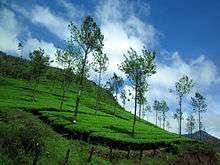
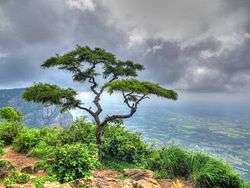
Eastern Kerala consists of land encroached upon by the Western Ghats; the region thus includes high mountains, gorges, and deep-cut valleys. The wildest lands are covered with dense forests, while other regions lie under tea and coffee plantations (established mainly in the 19th and 20th centuries) or other forms of cultivation.
The Western Ghats rise on average to 1500 m elevation above sea level. Some of the popular hill stations in the region are Munnar, Vagamon, Paithalmala, Wayanad, Nelliyampathi, Elapeedika, Peermade, Thekkady and Ponmudi.
Wildlife
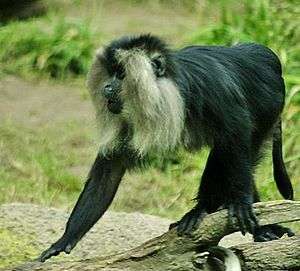
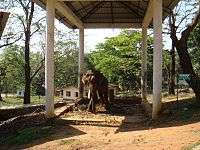
Most of Kerala, whose native habitat consists of wet evergreen rainforests at lower elevations and highland deciduous and semi-evergreen forests in the east, is subject to a humid tropical climate. However, significant variations in terrain and elevation have resulted in a land whose biodiversity registers as among the world’s most significant. Most of Kerala's significantly biodiverse tracts of wilderness lie in the evergreen forests of its easternmost districts. Kerala also hosts two of the world’s Ramsar Convention-listed wetlands: Lake Sasthamkotta and the Vembanad-Kol wetlands are noted as being wetlands of international importance. There are also numerous protected conservation areas, including 1455.4 km2 of the vast Nilgiri Biosphere Reserve. In turn, the forests play host to such major fauna as Asian elephant (Elephas maximus), Bengal tiger (Panthera tigris tigris), leopard (Panthera pardus), Nilgiri tahr (Nilgiritragus hylocrius), and grizzled giant squirrel (Ratufa macroura).[16] More remote preserves, including Silent Valley National Park in the Kundali Hills, harbour endangered species such as the lion-tailed macaque (Macaca silenus), Indian sloth bear (Melursus (Ursus) ursinus ursinus), and gaur (the so-called "Indian bison"—Bos gaurus). More common species include Indian porcupine (Hystrix indica), chital (Axis axis), sambar (Cervus unicolor), gray langur, flying squirrel, swamp lynx (Felis chaus kutas), boar (Sus scrofa), a variety of catarrhine Old World monkey species, gray wolf (Canis lupus), and common palm civet (Paradoxurus hermaphroditus). Many reptiles, such as king cobra, viper, python, various turtles and crocodiles are to be found in Kerala—again, disproportionately in the east. Kerala's avifauna include endemics like the Sri Lanka frogmouth (Batrachostomus moniliger), Oriental bay owl, large frugivores like the great hornbill (Buceros bicornis) and Indian grey hornbill, as well as the more widespread birds such as peafowl, Indian cormorant, jungle and hill myna, Oriental darter, black-hooded oriole, greater racket-tailed and black drongoes, bulbul (Pycnonotidae), species of kingfisher and woodpecker, jungle fowl, Alexandrine parakeet, and assorted ducks and migratory birds. Additionally, freshwater fish such as kadu (stinging catfish—Heteropneustes fossilis) and brackishwater species such as Choottachi (orange chromide—Etroplus maculatus, valued as an aquarium specimen) also are native to Kerala's lakes and waterways.
Waterfalls
- Adyanpara Falls, near Nilambur
- Aruvikkuzhi, near Maramon, Kozhencherry in Pathanamthitta District
- Aruvikkuzhi, near Pallickathode, Kottayam District
- Athirappilly Falls 80 ft (24 m)
- Charpa Falls
- Cheeyappara Falls, near Adimali
- Chethalayam Falls, in Wayanad[17]
- Kumbhavurutty Falls in Kollam district
- Lakkom Water Falls
- Madatharuvi Falls, near Ranny in Pathanamthitta District
- Marmala waterfall
- Meenmutty Falls, Thiruvananthapuram
- Meenmutty Falls 984 ft (300 m), in Wayanad
- Mulamkuzhi, near Malayattoor in Ernakulam District
- Panieli Poru waterfalls Ernakulam
- Palaruvi Falls, 300 ft (91 m) in Aryankavu near Punalur in Kollam district
- Pattathippara Falls
- Perunthenaruvi Falls
- Siruvani Waterfalls Palakkad
- Soochipara Falls 656 ft (200 m) / Sentinelrock falls, in Wayanad
- Thommankuthu Falls, near Thodupuzha
- Thusharagiri Falls
- Valara Falls, near Adimali
- Vazhachal Falls, near Athirappilly
- Vazhvanthol waterfalls Trivandrum
Lighthouses
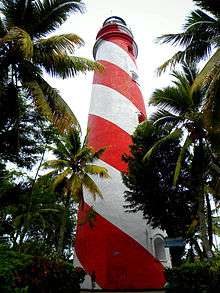
Lighthouses are the main centre of attractions of Kerala beaches and coast line. There are 15 lighthouses in the entire state of Kerala. Districts of Kollam, Kannur, Kozhikode, Alappuzha, Thrissur and Thiruvananthapuram have more than one lighthouse.[18]
- Major Lighthouses
- Vizhinjam lighthouse, Thiruvananthapuram
- Anjengo lighthouse, Thiruvananthapuram
- Tangasseri Lighthouse, Kollam (Tallest in the state)
- Kovilthottam Lighthouse, Kollam
- Alappuzha Lighthouse, Alappuzha
- Manakkodam Lighthouse, Alappuzha
- Cochin Lighthouse, Ernakulam
- Azhikode Lighthouse, Thrissur
- Chetwai Lighthouse, Thrissur
- Ponnani Lighthouse, Malappuram
- Beypore Lighthouse, Kozhikode
- Kozhikode lighthouse, Kozhikode (Defunct)
- Cannanore Lighthouse, Kannur
- Mount Dilly Lighthouse, Kannur
- Kasargode Lighthouse, Kasargode
Events
Festivals
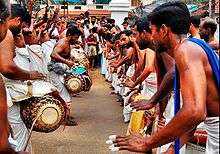
The major festival in Kerala is Onam. Kerala has a number of religious festivals. Thrissur Pooram, Attukal Pongala, Beema Palli Uroos, and Chettikulangara Bharani are the major temple festivals in Kerala. The Thrissur Pooram is conducted at the Vadakumnathan temple, Thrissur. The Chettikulangara Bharani is another major attraction. The festival is conducted at the Chettikulangara temple near Mavelikkara. The Sivarathri is also an important festival in Kerala. This festival is mainly celebrated in Aluva Temple and Padanilam Parabrahma Temple. Padanilam Temple is situated in Alappuzha district of Kerala, about 16 kilometres (9.9 mi) from Mavelikkara town. Parumala Perunnal, Manarkadu Perunnal are the major festivals of Christians. Muslims also have many important festivals.
Kochi-Muziris Biennale
Kerala is also known for the many events conducted by the Ministry of Tourism for tourist attractions. Kochi-Muziris Biennale, the first Biennale in India was conducted in Kochi from 12 December 2012 till 13 March 2013.The government contributed about 12-150 million on the event.[19] An International Coir Fest is conducted annually that is aimed at developing the coir industry of Kerala and tourism.
Grand Kerala Shopping Festival
To further promote tourism in Kerala, the Government of Kerala started the Grand Kerala Shopping Festival in the year 2007.[8] Since then it has become an annual shopping event being conducted in the December–January period. During this period stores and shops registered under the GKSF offer a wide range of discounts, VAT refunds, etc. Along with the guaranteed shopping experience, shoppers are provided with gift coupons for a fixed worth of purchase entering them into weekly and mega lucky draws. As compared to shopping festivals held in other countries, this Festival converts the entire state of Kerala into a giant shopping mall, incorporating not just the big players, but also the small and medium scale industries. Through this shopping festival, the Kerala Government intends to transform the State into a hub for international shopping experience and thereby launch "Shopping Tourism" in the state.
Ayurveda
Medical tourism, promoted by traditional systems of medicine like Ayurveda and Siddha, is widely popular in the state, and draws increasing numbers of tourists. A combination of many factors has led to the increase in popularity of medical tourism: high costs of healthcare in industrialised nations, ease and affordability of international travel, improving technology and standards of care.
However, rampant recent growth in this sector has made the government apprehensive. The government is now considering introduction of a grading system which would grade hospitals and clinics, thus helping tourists in selecting one for their treatments.[20]
Culture
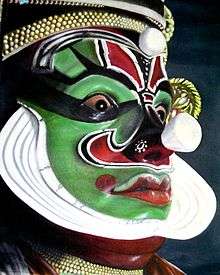
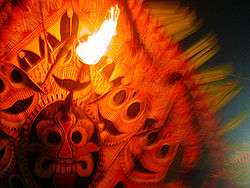
Kerala's culture is mainly Hindu in origin, deriving from a greater Tamil-heritage region known as Tamilakam. Later, Kerala's culture was elaborated on through centuries of contact with overseas cultures.[21] Native performing arts include koodiyattom, kathakali—from katha ("story") and kali ("play")—and its offshoot Kerala Natanam, koothu (akin to stand-up comedy), mohiniaattam ("dance of the enchantress"), thullal, padayani,thirayattam, and theyyam. Other arts are more religion- and tribal-themed. These include chavittu nadakom, oppana (originally from Malabar), which combines dance, rhythmic hand clapping, and ishal vocalisations. However, many of these art forms largely play to tourists or at youth festivals, and are not as popular among most ordinary Keralites, who look to more contemporary art and performance styles, including those employing mimicry and parody. Additionally, a substantial Malayalam film industry effectively competes against both Bollywood and Hollywood.
Several ancient ritualised arts are Keralite in origin; these include kalaripayattu (kalari ("place", "threshing floor", or "battlefield") and payattu ("exercise" or "practice")). Among the world's oldest martial arts, oral tradition attributes kalaripayattu's emergence to Parasurama. Other ritual arts includeThirayattam, theyyam, poorakkali and Kuthiyottam. Thirayattam is a ritual performing folk aet form of south malabe region in kerala.This vibrant art form blend of dance, music, theatre, satire, facial & body painting, masking, martial art and ritualistic function.Thirayattam enacted i courtyards of "Kaavukal"(sacred groves)and village shrine.
Kuthiyottam is a ritualistic symbolic representation of human bali (homicide). Folklore exponents see this art form, with enchanting well–structured choreography and songs, as one among the rare Adi Dravida folklore traditions still preserved and practised in Central Kerala in accordance with the true tradition and environment. Typical to the Adi Dravida folk dances and songs, the movements and formations of dancers (clad in white thorthu and banyan) choreographed in Kuthiyottam are quick, peaks at a particular point and ends abruptly. The traditional songs also start in a stylish slow pace, then gain momentum and end abruptly.
Kuthiyotta Kalaris', run by Kuthiyotta Ashans (Teachers or leaders), train the group to perform the dances and songs. Normally, the training starts about one to two months before the season. Young boys between 8 and 14 years are taught Kuthiyottam, a ritual dance in the house amidst a big social gathering before the portrait of the deity. Early in the morning on Bharani, after the feast and other rituals, the boys whose bodies are coiled with silver wires, one end of which is tied around his neck and an arecanut fixed on the tip of a knife held high over his head, are taken in procession to the temple with the accompaniment of beating of drums, music, ornamental umbrellas, and other classical folk art forms, and richly caparisoned elephants.
All through the way to the temple tender coconut water will be continually poured on his body. After the circumambulation the boys stands at a position facing the Sreekovil (Sanctum Sanctorum) and begins to dance. This ceremony ends with dragging the coil pierced to the skin whereby a few drops of blood comes out.
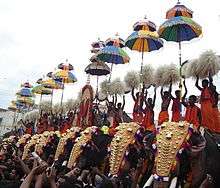
On this day just after midday the residents of the locality bring huge decorated effigies of Bhima panchalia, Hanuman and extremely beautiful tall chariots in wheeled platforms, and after having darshan the parties take up their respective position in the paddy fields lying east of the temple.
During the night, the image of Devi will be carried in procession to the effigies stationed in the paddy fields. On the next day these structures will be taken back. A big bazaar is also held at Chetikulangara as part of this festival. Kuthiyottam is the main vazipadu of the Chettikulangara temple, Mavelikkara.
In respect of Fine Arts, the State has an abounding tradition of both ancient and contemporary art and artists.The traditional Kerala murals are found in ancient temples, churches and palaces across the State. These paintings, mostly dating to between the 9th to 12th centuries AD, display a distinct style, and a colour code which is predominantly ochre and green.
Like the rest of India, religious diversity is very prominent in Kerala. The principal religions are Hinduism, Christianity, and Islam; Jainism, Judaism, Sikhism, and Buddhism have smaller followings. The state's historic ties with the rest of the world have resulted in the state having many famous temples, churches, and mosques notably 8 of the world's oldest churches—from the 1st century CE, founded by Thomas the Apostle when he reached Indian shores, the first mosque of India, which existed even before the death of the prophet Muhammad and the oldest active synagogue in the Commonwealth of Nations.
Recognising the potential of tourism in the diversity of religious faiths, related festivals and structures, the tourism department launched a "Pilgrimage tourism" project.[22][23] Major pilgrim tourism attractions include Guruvayur, Sabarimala, Malayatoor, Paradesi Synagogue, St. Mary's Forane (Martha Mariam) Church Kuravilangad built in 105 A.D, Attukal Pongala (which has the Guinness record for being the largest gathering of women in the planet), and Chettikulangara Bharani.
Advertising campaigns
Kerala Tourism is noted for its innovative and market-focused ad campaigns.[24] These campaigns have won the tourism department numerous awards, including the Das Golden Stadttor Award for Best Commercial, 2006,[25] Pacific Asia Travel Association- Gold Award for Marketing, 2003 and the Government of India's Best Promotion Literature, 2004, Best Publishing, 2004 and Best Tourism Film, 2001.
Catchy slogans and innovative designs are considered a trademark of brand Kerala Tourism. Celebrity promotions are also used to attract more tourists to the state.[26][27] The Kerala tourism website is widely visited, and has been the recipient of many awards. Recently, the tourism department has also engaged in advertising via mobiles, by setting up a WAP portal, and distributing wallpapers and ringtones related to Kerala through it.[28]
Vigilante attacks
Vigilante attacks and moral policing are the most common threats to the tourist industry in the state of Kerala, India. Even though literacy is high in this part of India, tolerance levels are very low. The remoteness of Kerala from major Indian cities have developed a rural or tribal attitude in the people that doesn't tolerate any challenges to traditional lifestyle and culture.
- In 2011, a 26-year-old youth was killed by a mob in Kodiyathur, Kerala, for allegedly having an affair with a married woman.[29] All of the accused were sentenced to life imprisonment in October 2014.[30]
- Mankada village in Malappuram district attracted the attention of national newspapers in 2016 when a 42-year-old man was beaten to death by his neighbors for visiting his girlfriend in the night.
- On 23 October 2014, a restaurant in Kozhikode was attacked and vandalised. The attackers claimed that eatery was facilitating immoral activities.[31] The attack came after a local Malayalam-language TV channel broadcast a report claiming that this restaurant allowed boyfriends and girlfriends drink fruit juice together.[32]
- On 14 July 2015, a Madhyamam Daily journalist and her husband were attacked by a group at her office. They did not accept that they were married. The police arrived before the incident escalated. Later, a Communist Party of India (Marxist) leader was arrested for leading the attack.[33][34]
- In the state capital of Kerala, the police has formed a division called 'pink police' to keep a watch on dating activities of young people. The police were found abusing young college couples for sitting together and talking without showing an affidavit from the parents for doing so. One boy was taken to the police station and beaten severely for sitting in the Museum Garden with his girlfriend. [35]
Rape attempts
Several tourists were raped in different parts of Kerala during the last few years. Women tourists should avoid going out alone after dark and it is better to avoid lonely beaches other such areas.[36]
Awards
The state has won numerous awards for its tourism initiatives. These include:
- 2016 - ITB-Berlin"s Golden City Gate Gold Award for Kerala tourism
- 2014 - ITB-Berlin's Golden City Gate Gold Award for Print Campaign[37]
- 2014 -UNWTO Ulysses Award for Innovation in Public Policy and Governance for Sustainable Tourism[38]
- 2012 - Kerala Tourism wins silver prize at the Golden Gate Award of the Internationale Tourismus-Börse Berlin[39]
- 2005 - Nominated as one among the three finalists at the World Travel and Tourism Council's 'Tourism for Tomorrow' awards in the destination category[40]
- Das Golden Stadttor Award for Best Commercial, 2006
- Pacific Asia Travel Association
- Grand award for Environment, 2006
- Gold award for Ecotourism, 2006
- Gold award for Publication, 2006
- Gold Award for E-Newsletter, 2005
- Honourable Mention for Culture, 2005
- Gold Award for Culture, 2004
- Gold Award for Ecotourism, 2004
- Gold Award for CD-ROM, 2004 and 2003
- Gold Award for Marketing, 2003
- Grand Award for Heritage, 2002
- Pacific Asia Travel Writers Association
- International Award for Leisure Tourism, 2000–2001
- Government of India
- Best Performing Tourism State, 2005
- Best Maintained Tourist-friendly Monument, 2005
- Best Publishing, 2005
- Best Marketed and Promoted State, 2004.
- Best Maintained Tourist-friendly Monument, 2004
- Best Innovative Tourism Project, 2004
- Best Promotion Literature, 2004
- Best Publishing, 2004
- Best Performing State for 2003, 2001, 2000 and 1999 - Award for Excellence in Tourism.
- Best Practices by a State Government, 2003
- Best Eco-tourism Product, 2003
- Best Wildlife Sanctuary, 2003
- Most Innovative Use of Information Technology, 2003 and 2001
- Most Tourist-friendly International Airport, 2002
- Most Eco-friendly Destination, 2002
- Best Tourism Film, 2001 ( madivilikkunnu star in pavnlal )
- Outlook Traveller - TAAI
- Best State that promoted Travel & Tourism, 2000–2001
- Federation of Indian Chambers of Commerce and Industry
- Award for Best Marketing, 2003
- Award for Best Use of IT in Tourism, 2003
- Galileo - Express Travel & Tourism
- Award for the Best Tourism Board, 2006
- Award for the Best State Tourism Board, 2003
Muziris Heritage Project
Muziris Heritage Project is a tourism venture by Tourism Department of Kerala to "reinstate the historical and cultural significance Muziris". The idea of the project came after the extensive excavations and discoveries at Pattanam by Kerala Council for Historical Research.[41] The project also covers various other historically significant sites and monuments in central Kerala.
The nearby site of Kottapuram, a 16th-century fort, was also excavated (from May 2010) as part of the Muziris Heritage Project.[42]
Department of Forests and Wildlife (Kerala)
Department of Forests and Wildlife (Kerala) : Headquarters and training centre are both located in Thiruvananthapuram city. More information on ecotourism destinations and permissions for trekking including arranging guides can be obtained through the department as well. .
Outline of Tourism in India
- List of World Heritage Sites in India
- List of national parks of India
- List of lakes of India
- List of waterfalls in India
- List of State Protected Monuments in India
- List of beaches in India
- Incredible India
- List of Geographical Indications in India
- Medical tourism in India
- List of botanical gardens in India
- List of hill stations in India
- List of gates in India
- List of zoos in India
- List of protected areas of India
- List of aquaria in India
- List of forts in India
- List of forests in India
- Buddhist pilgrimage sites in India
- Hindu pilgrimage sites in India
- List of rock-cut temples in India
- Wildlife sanctuaries of India
- List of rivers of India
- List of mountains in India
- List of ecoregions in India
- Coral reefs in India
- List of stadiums in India
Notes and references
- ↑ "Kerala Tourism: Paradises in the world". The Hindu. Retrieved 20 February 2012.
- ↑ "Tourism beckons". The Hindu. 11 May 2004. Retrieved 9 August 2006.
- 1 2 "Tourist statistics for Kerala" (PDF). Tourism Statistics and lpu. Kerala Tourism Development Corporation. Archived from the original (PDF) on 1 July 2006. Retrieved 9 August 2006.
- ↑ "Kerala Tourism – Superbrand". Superbrand status of Kerala Tourism brand. Government of Kerala. Archived from the original on 12 July 2006. Retrieved 9 August 2006.
- ↑ Monday, 18 July 2011 at 1745 hrs IST (18 July 2011). "Andhra Pradesh top tourist destination: Tourism Ministry". Financialexpress.com. Retrieved 13 August 2012.
- ↑ http://www.keralatourism.org/destination-wise-foreign-2010.pdf
- ↑ "Tourist statistics – 2008" (PDF). Government of Kerala, Tourism Department. Retrieved 22 October 2010.
- 1 2 "Shopping festival begins". The Hindu. 2 December 2007.
- ↑ Mohindra 2003, p. 8.
- ↑ Kerala Tourism - Branding a Tourist Destination
- ↑ Kerala is the world's fastest-growing tourism destination says Renuka Choudhry. Domain-b.com (17 August 2004).
- ↑ NDTV - God's own country: Govt launches campaign to pull tourists Archived 17 March 2008 at the Wayback Machine.
- ↑ Ayub, Akber (ed), Kerala: Maps & More, Coastal Circuit, 2006 edition 2007 reprint, pp. 96-112, Stark World Publishing, Bangalore, ISBN 81-902505-2-3
- ↑ Govind, M.Harish. "Ramparts by the Arabian Sea". Magazine. The Hindu, 19 June 2005. Retrieved 8 January 2008.
- ↑ MINUTES OF THE WORKSHOP ON RESPONSIBLE TOURISM FOR KOVALAM Archived 3 January 2008 at the Wayback Machine.
- ↑ (Sreedharan 2004, p. 12).
- ↑ "Major Waterfalls".
- ↑ "Directorate General of Lighthouses and Lightships". DGLL. Retrieved 31 August 2015.
- ↑ "Kochi becomes Biennale city". The Hindu. 13 December 2012.
- ↑ Accreditation Of Hospitals To Promote Top Medical Tourism Destination In India
- ↑ Bhagyalekshmy 2004, pp. 6–7.
- ↑ Incredible Kerala. Business-standard.com.
- ↑ Jumbo tourism: Guruvayur temple to woo visitors Archived 13 April 2014 at the Wayback Machine.
- ↑ Kerala Tourism to unveil new TV campaign
- ↑ "Kerala tourism commercial gets award". Archived from the original on 2009-10-05.
- ↑ "TV stars to promote Kerala tourism". Archived from the original on 2009-05-14.
- ↑ Kerala tourism to sign Big B and Aishwarya Rai as brand ambassadors. Indiantelevision.com (9 May 2006).
- ↑ Wooing tourists through mobile phones. Hindu.com (14 August 2006).
- ↑ Staff Reporter (November 15, 2011). "Special team to probe death of youth". The Hindu. Retrieved 2 November 2014.
- ↑ Philip, Shaju (October 8, 2014). "Kerala: 9 convicted in moral police murder case". The Indian Express. Retrieved 2 November 2014.
- ↑ "'Moral police' attack restaurant in Kozhikode". The Hindu. 24 October 2014. Retrieved 10 August 2015.
- ↑ "Congress channel alleges 'immorality' at Kerala cafe, BJP workers vandalise it". The Indian Express. 25 October 2014. Retrieved 10 August 2015.
- ↑ "CPI(M) local leader arrested for 'moral police' attack on journalist and husband". The News Minute. Retrieved 10 August 2015.
- ↑ "Bid to Attack Journalist, Husband". The New Indian Express. 13 July 2015. Retrieved 10 August 2015.
- ↑ http://www.mathrubhumi.com/features/social-issues/moral-policing-malayalam-news-1.1408158
- ↑ http://www.azhimukham.com/news/17007/kovalam-foreign-women-rape-azhimukham
- ↑ http://www.ndtv.com/article/south/kerala-great-backwaters-campaign-wins-tourism-oscar-493195
- ↑ http://ibnlive.in.com/news/kerala-becomes-first-indian-state-to-win-top-un-award-in-tourism/447589-62-126.html
- ↑ Kerala Tourism wins silver prize at ITB Berlin. Thehindu.com (10 March 2012).
- ↑ Kerala Tourism Awards list. Keralatourism.org.
- ↑ "Introduction". www.keralatourism.org Kerala Tourism
- ↑ "Exhibition on Kottappuram Fort excavations" THIRUVANANTHAPURAM, December 16, 2010 'The Hindu'
External links
| Wikimedia Commons has media related to Tourism in Kerala. |
- Official Website of Department of Tourism, Government of Kerala !
- Official Facebook page of Department of Tourism, Government of Kerala !
- Official Twitter handle of Department of Tourism, Government of Kerala !
- Official Instagram of Department of Tourism, Government of Kerala !

